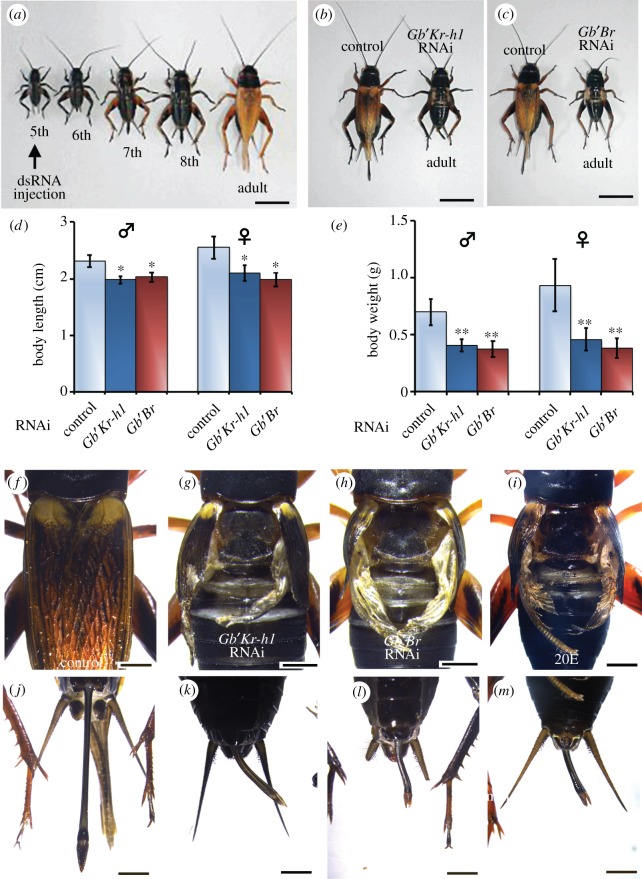Figure 1.
Phenotypes observed after RNAi-mediated depletion of Gb′Kr-h1 and Gb′Br in the nymph stage of G. bimaculatus. (a) dsRNA was injected into nymphs on day 1 of the fifth instar. After hatching, the life cycle of cricket nymphs progresses through eight instars, and the final instar nymph moults into an adult. (b,c) The effects of RNAi targeting DsRed2 (control), Gb′Kr-h1 or Gb′Br in nymphs on day 1 of the fifth instar. In each panel, the control adult is on the left side and the RNAi-treated on the right. RNAi-treated nymphs underwent precocious adult metamorphosis after the sixth instar. (d,e) Body length (d) and weight (e) of adults (male: ♂; and female: ♀) that developed following injections of dsRNA targeting DsRed2, Gb′Kr-h1 or Gb′Br. Data are presented as the mean ± s.d. *p < 0.05; **p < 0.005 according to Student's t-test. Wings of precocious adults produced following the injection of dsRNA were significantly smaller and were wrinkled (f–h). Following the injection of 20E at the fifth instar, the fifth instar nymphs underwent precocious adult metamorphosis after the sixth instar, and the wings of the 20E-treated adults were also significantly reduced and wrinkled (i). (j–m) Ovipositors of precocious adults produced following the injection of dsRNAs (j–l) or 20E-treated (m) were cleaved at the tip and they became abnormally short. Scale bars: 10 mm in (a–c); 2 mm in (f–m).

